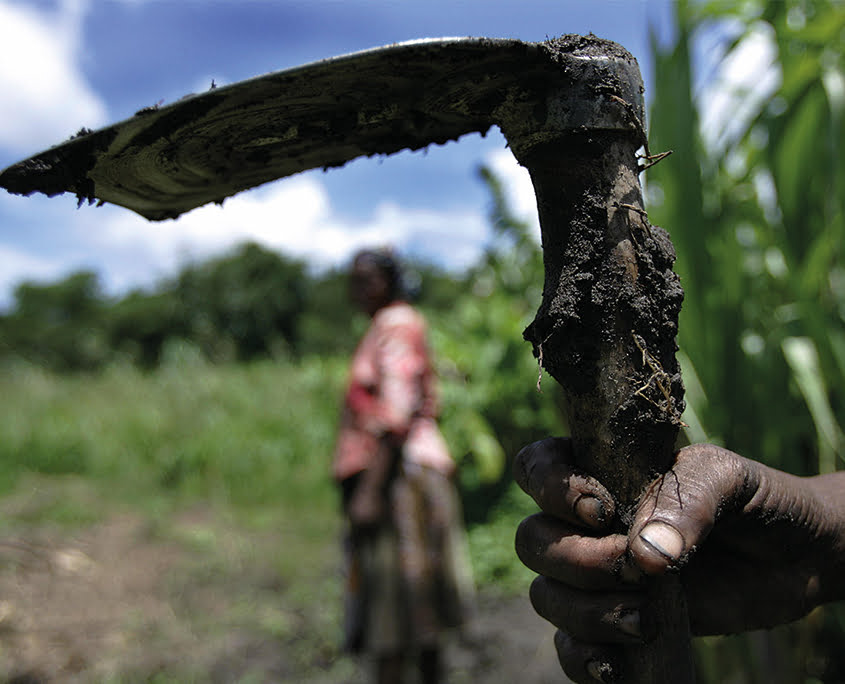Swamplands and vegetation in the Greater St Lucia Wetlands Park, a 260,000-hectare protected area in eastern South Africa, is being battered by impoverished local communities dependent on nature’s resources to survive.
Photo credit: Alexander Joe AFP via Getty Images
Link between wetlands and human wellbeing
Celebrating World Wetlands Day under the theme “Wetlands and Human Wellbeing” sheds light on the indispensable role wetlands play in maintaining ecological balance and enhancing human life. The theme highlights the interconnection between wetlands, climate change control and the overall wellbeing of the global population.
Wetlands, often overlooked and undervalued, provide a myriad of ecosystem services essential for human survival. They act as natural carbon sinks, purify water, regulate climate and support biodiversity. As the world grapples with the urgent need to address climate change, understanding and preserving wetlands is a crucial part of the solution.
Wetlands as natural carbon sinks
Wetlands as natural carbon sinks play a crucial role in taking a hold of and storing carbon from the atmosphere. Wetlands, such as marshes, swamps and peatlands, are environments characterised by waterlogged conditions, which create an anaerobic (low-oxygen) environment. In such conditions, the decomposition of organic matter is slowed down, allowing for the accumulation and long-term storage of carbon.
Wetlands contain large amounts of organic material in the form of plant debris, dead vegetation, and other organic matter. Instead of decomposing rapidly, as it might in well-aerated environments, this organic material in wetlands undergoes a slower decomposition process due to the waterlogged conditions. As a result, a significant portion of the carbon in this organic matter is retained in the wetland soils for extended periods, acting as a natural carbon sink. By functioning as carbon sinks, wetlands contribute to mitigating climate change. They help to reduce the concentration of carbon dioxide (CO2), a greenhouse gas responsible for global warming, in the atmosphere. Preserving and restoring wetlands is therefore crucial for biodiversity and water management, and for their role in the global carbon cycle and climate regulation.
Based on this explanation, this year’s theme of “Wetlands and Human Wellbeing” aligns closely with several Sustainable Development Goals (SDGs), emphasising the interconnectedness of environmental preservation and human prosperity.
SDG 6 Clean Water and Sanitation
Wetlands are vital in maintaining water quality and availability. Preserving wetlands contributes directly to achieving the goal of ensuring access to clean water and sanitation for all.
SDG 13 Climate Action
The conservation of wetlands is a tangible action towards combating climate change, aligning with the global efforts to limit global temperature rise and build climate resilience.
SDG 15 Life on Land and SDG 14 Life Below Water
Wetlands are biodiversity hotspots, supporting diverse ecosystems on land and in water. Protecting wetlands contributes to the conservation of terrestrial and aquatic life.
The role of society and publishing houses
The responsibility of safeguarding wetlands extends beyond governmental bodies. Society at large plays a crucial role in fostering awareness and advocating for wetland preservation. Environmental education initiatives, community engagement and responsible tourism contribute to the conservation of wetlands.
Publishing houses, as disseminators of information, have a responsibility to raise awareness about the importance of wetlands and their connection to human wellbeing. Through articles, books and other publications, they can amplify the message of environmental stewardship and the role wetlands play in sustaining life.
As we confront the challenges of climate change, recognising the value of wetlands is imperative. Through collective efforts, all of us can contribute to a sustainable future where wetlands thrive, ensuring the wellbeing of both the environment and humanity.



